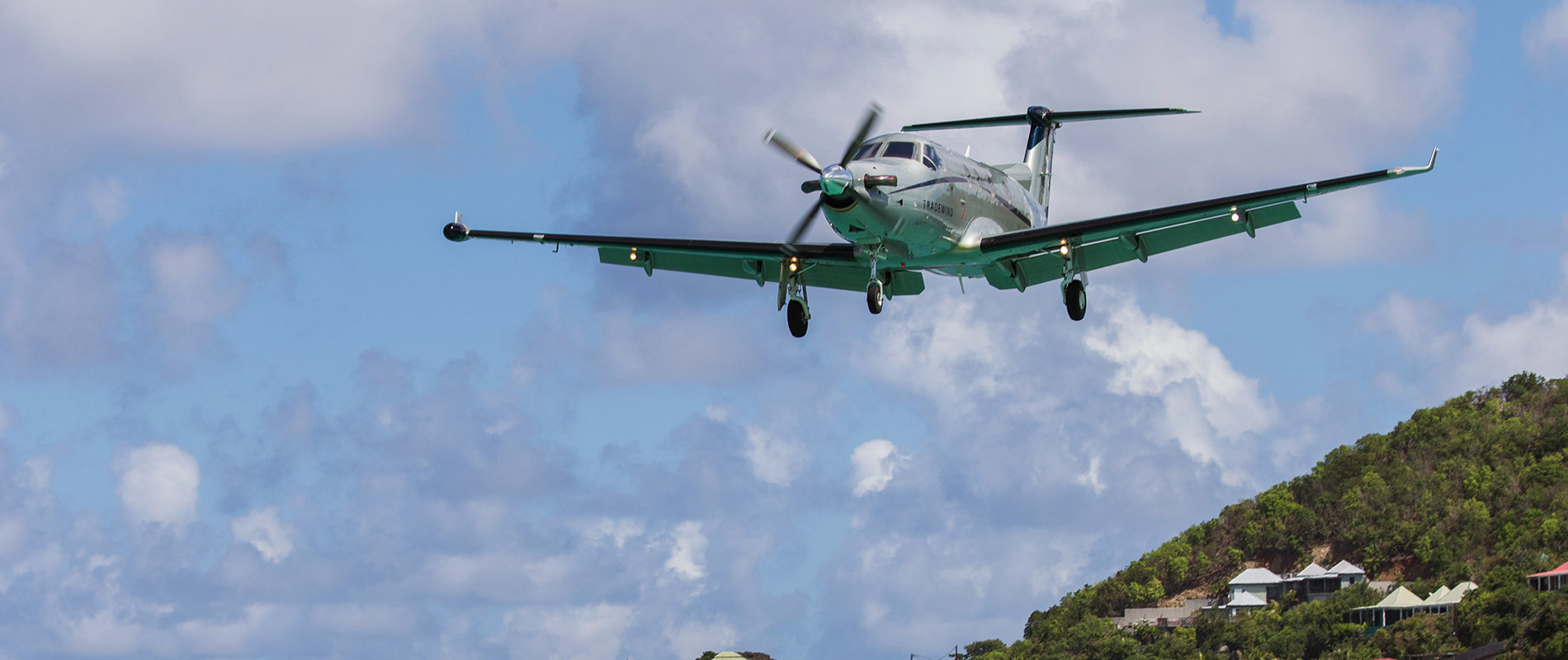The pilot of a plane nearing O’Hare Airport announces its “final descent into the greater Chicago area,” and the grammar mavens on board all wince. The error there is redundancy—either “greater Chicago” or “the Chicago area” would suffice.
Adam Schaefer speaks in very literate English, but the Director of Operations for Tradewind Aviation might just shrug that one off. Not simply because Schaefer is a pilot, himself, but out of his deep bias toward what redundancy means for aviation safety.
“Redundancy in our business is everywhere you look,” he says. “We don’t even perceive it the way people outside the industry might, as something excessive or burdensome. To us it’s fundamental.”
In aircraft design the mechanical functions all have backup systems. In pre-flight protocols like the one Tradewind follows, a plane is inspected by mechanics, then by the pilots. “Our scheduling software has 100 validation checks,” says Schaefer, who is both a pilot and a licensed mechanic, “and those checks have double-checks.” Certain safety factors are the responsibility of a dispatcher, then a software programmer, then the chief pilot. “You see things caught at the third level,” Schaefer says. “It’s rare but it happens.”

The Federal Aviation Administration has two sets of regulations covering private aviation. Companies that fly scheduled routes as well as charters are held to higher standards than their charter-only counterparts. This two-tier arrangement plays out in everything from financial fitness to the seniority and experience level of inspectors, according to Schaefer. Nor does he question the premise.
“The idea, as I understand it, is that someone buying a single seat on a scheduled flight will feel less need for diligence and scrutiny than someone booking a charter,” Schaefer says. “Chartering planes is so relatively uncommon that people who do it will take steps to check things out on their own. Therefore, if your company offers scheduled flights the safety responsibility is more on you.”
Tradewind provides both scheduled and charter service because it’s a more efficient use of company assets and resources—a better business model, for the markets being served. That causes a higher set of safety standards to kick in, and the company would hardly seem to mind, because it actually goes one step further and subjects itself to monitoring by a third-party inspection service. And pays for the privilege.
That independent party is ARGUS International, recognized for its authoritative rating system for aircraft operators and their safety history. Tradewind participates in ARGUS CHEQ (which stands for Charter Evaluation and Qualification) and has attained the status of ARGUS Gold, indicating a safety history in the upper tier of the industry. “You provide them with a very extensive body of data when you register,” explains Schaefer. “ARGUS knows our pilots, our aircraft, the whole company, really. They produce an overall safety score for us based on a wide range of factors.”
Part of the double-check and triple-check culture at Tradewind involves monitoring the monitor, so to speak. Recently there was a tarmac accident that reportedly caused damage to a Tradewind aircraft. “That turned out to be incorrect, and a staff member at our operations center flagged it,” recalls Schaefer. “The plane involved had a similar tail number to one of our planes, and it was misidentified by a couple of digits. Within an hour the correction was made.”

The safety history compiled by Tradewind since it began operations is truly remarkable. The company has such a clean record that some combination of modesty and superstition might induce Schaefer not to talk about it. But either sentiment would cloud or obscure the patterns, standards, and procedures that a culture of safety is built upon.
“What we’ve done most recently to institutionalize our practices is develop and release our own, proprietary SMS, or Safety Management System,” says Schaefer. “Major carriers are required to do this, but we’ve chosen to do it on our own. It’s a way of moving farther up the timeline from what is considered an event and getting to the precursors—the circumstances that could lead to a problem down the line.”
Safety in the air is the product of endless small details. For every little fastener holding the plane together, there is a specification for its size, for the material it’s plated with, for the lubricant applied to its threads before torquing, for the torque (tightness) value, and a spec for where, in sequence, that particular fastener gets tightened.
But along with being exact and unyielding, safety aloft is also fuzzy, according to Schaefer. How is that?
“Safety is a feeling, it’s a general perception,” he says. “We find that the more people fly with us, the less they even think about safety.” Interestingly, safety practices at Tradewind extend to the purely cosmetic, such as cabin cleanliness and sharp-looking uniforms worn by the crew. “At some level of consciousness, people associate soiled carpeting and worn upholstery with low standards overall,” Schaefer says, “including a lax approach to safety. So, if we take great cosmetic care of the plane, it stands to reason we also take great mechanical care.”
He can say that again.

